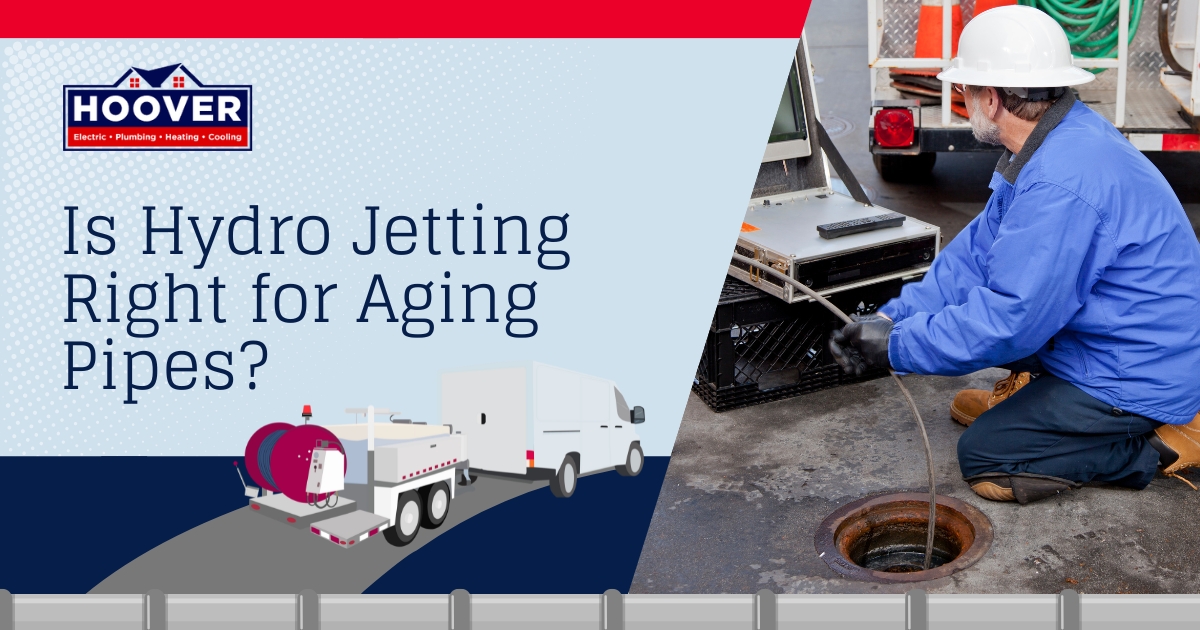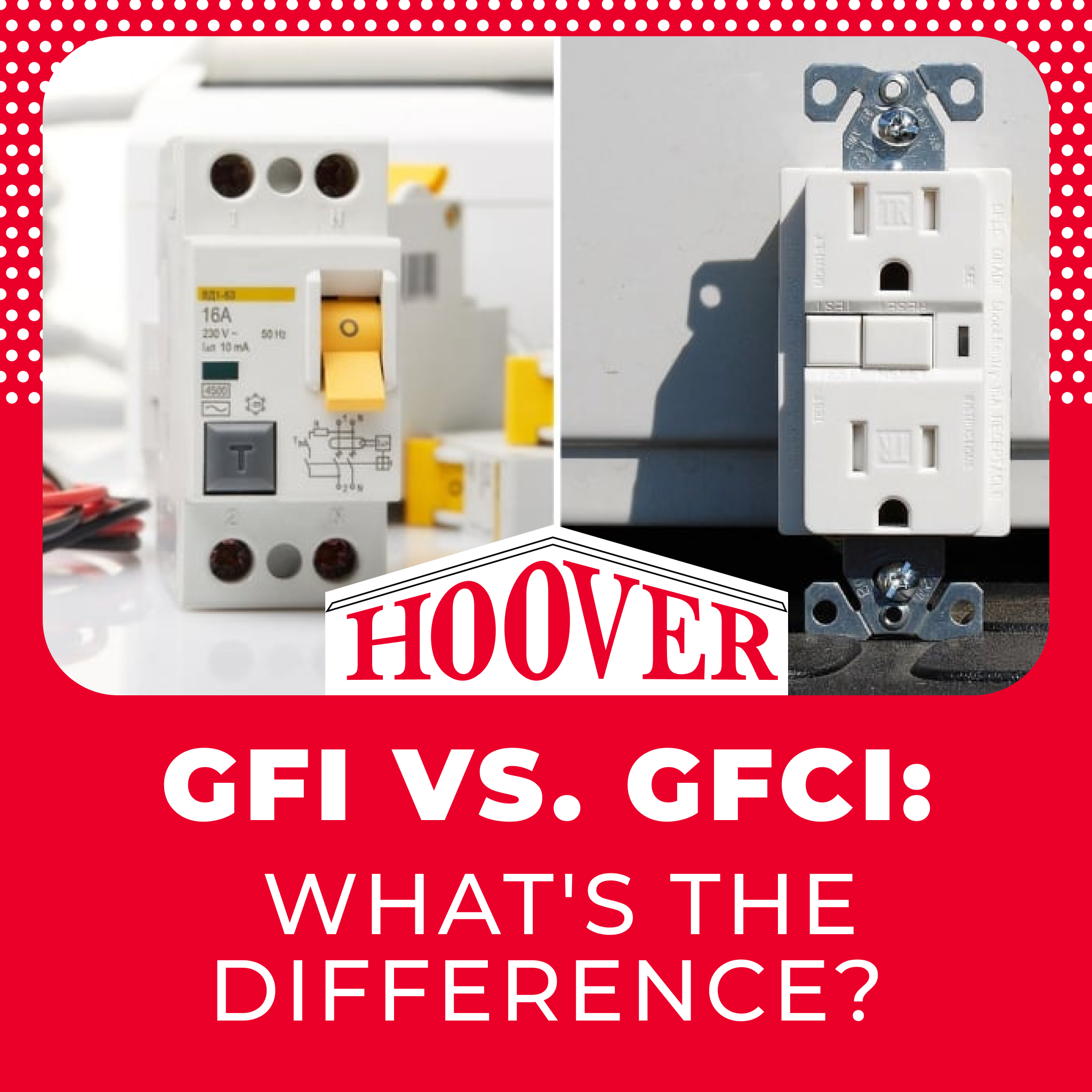
A water pressure regulator is required in most municipalities. High water pressure can cause a wide range of problems in your plumbing system. Installing a pressure regulator valve protects sensitive components by keeping water pressure in check. This is important because pressure often fluctuates in a city water system, especially during peak periods.
However, water pressure regulators can develop problems, causing water pressure in your plumbing system to fluctuate or go too high. Serious damage can occur if these issues last too long. Fortunately, Hoover’s plumbers can help homeowners throughout Troy, MI, with water pressure regulator problems. Here’s a look at how the system works, common signs of trouble, and when to call a professional.
What Is a Water Pressure Regulator?
A water pressure regulator is a type of valve within a brass fitting. It is installed after the main water shutoff valve and has a dome-shaped top. Here, you’ll find an adjustment screw that controls the pressure levels of water exiting the device. Inside the regulator, a variable spring-loaded diaphragm narrows when water enters at a high pressure and widens when water pressure drops.
The ideal water pressure for a residential plumbing system is 40 to 60 psi. If it rises above 80 psi, pipes, fittings, and fixtures can be stressed and damaged. Maintaining balanced water pressure is important; otherwise, pipes, faucets, and fixtures as well as appliances such as dishwashers and water heaters can be damaged. You could also deal with burst pipes, which cause extensive and costly water damage.
Signs of Water Pressure Regulator Problems
You can prevent such problems by recognizing the signs of a failing water pressure regulator. These include:
- Fluctuating Water Pressure: If the water pressure from faucets and fixtures keeps increasing and decreasing, the water pressure regulator may be malfunctioning. This can put excess strain on pipes and fittings.
- Water Hammer: A banging or hammering noise when a faucet is running means water is pushing through with too much force. The noise comes from the vibration of pipes near the fixture or in the walls.
- High Water Pressure: A buildup of pressure can cause water to exit faucets with too much force. It can also damage your water heater, dishwasher, washing machine, and water filtration system.
- Low Water Pressure: Low water pressure can be caused by various plumbing problems. Low water pressure or no pressure at all indicates it’s time to replace the pressure-reducing valve. If pressure is low only when using hot water, the issue is with your water heater.
- Leaks in the Plumbing System: If a faucet leaks when the water is off, high pressure may have damaged the gasket and other parts. Fixing the faucet doesn’t correct the underlying problem. Other signs of leaks include low water pressure, stains on walls and ceilings, and running water sounds when your plumbing isn’t in use.
Causes of Water Pressure Regulator Issues
The valve can last for many years. But over time, moving parts can start to fail. Poor water quality, chemicals, abrasive materials, and increased usage can contribute to issues such as:
- Normal Wear and Tear: A water pressure regulator can be expected to last 10 to 15 years; it may even go past 20 years. It may fail sooner if abrasive materials damage the seat and throttling stem or chemicals damage pressure regulator elements.
- Sediment Buildup: Sediment from hard water minerals and other sources can build up in the valve, causing issues with regulator performance. To prevent issues caused by sediment, you can have a professional clean the water pressure regulator regularly or install a water softening system outside your house.
- Corrosion and Rust: Constant exposure to moisture can cause metal components to rust over time. Once these corrode, the pressure regulator will not function properly. Have a professional replace the unit as soon as you notice signs of corrosion.
DIY Troubleshooting Tips
We advise calling a professional plumber in Troy if your water pressure regulator is bad. However, you can check for issues with it to determine if it’s the source of your plumbing woes. Telltale signs that the regulator is going bad include:
- Water pressure is lower/higher at all faucets
- Toilet tanks take longer to refill
- Water pressure from showerheads is low
To troubleshoot a water pressure regulator:
- Adjust the Valve: Using a crescent wrench, loosen the lock nut and turn the adjustment screw counterclockwise to lower the water pressure. Turning it clockwise will raise the water pressure. Don’t exceed one full revolution at a time. Tighten the lock nut when the desired pressure level is achieved. Then test a plumbing fixture to see if the water pressure has changed.
- Use a Pressure Gauge: Attach the pressure gauge to a hose faucet, bib, or any faucet with threads. Turn off other faucets and water-using appliances to get an accurate reading. Call a plumber if it exceeds 80 psi. You can also install a water pressure monitor to keep a check on the flow rate and detect potential leaks.
Professional Inspection and Repair
It can take a trained eye to detect some water pressure regulator problems. Therefore, schedule regular plumbing inspections. A licensed contractor knows the issues to look for and can test the device to ensure it’s working correctly. They also have the parts, tools, and expertise to perform quick repairs or replace the water pressure regulator if necessary. This can protect your plumbing pipes, fixtures, and appliances over time and save you money.
To address an issue, the job often entails disassembling, cleaning, and reinstalling (or replacing) the pressure regulator. This entails a few tools and steps. Attempting a DIY fix can cause damage to your plumbing. Always hire a professional to repair or replace the device. They can also check for issues in your plumbing system caused by extended periods of high water pressure.
Frequently Asked Questions
Why Is My Water Pressure Constantly Fluctuating?
If you don’t have a steady water pressure, the regulator may be clogged or malfunctioning. Perhaps it needs to be adjusted. Other potential issues include a plumbing leak, rusted pipes, or a blockage caused by debris or mineral deposits.
Have I Noticed a Water Hammer Effect in My Pipes?
Water hammer is a banging, hammering, or thumping noise caused by pipes vibrating or hitting one another. The shockwave associated with it can stress and damage pipes, fixtures, and appliances. It’s often caused by trapped air, but a valve issue is a strong possibility.
Is My Water Pressure Too High?
A direct measurement will tell if your water pressure is above the 80 psi threshold. Hearing water hammer is also a sign of high water pressure. Water leaks, mold, and high water bills can indicate a problem too, as can leaking faucets and running toilets.
What Are Some Unusual Noises When Using Water Fixtures?
Call a plumber if you hear banging. But if your plumbing system emits gurgling sounds or rattling, creaking, dripping, squeaking, or whistling noises, call a technician to fix the underlying issue before you have an emergency.
How Do I Know I Have a Water Pressure Regulator?
The water pressure regulator is located downstream of the main shutoff valve. To find it, go to where the main water line enters your house. It’s typically a brass bell-shaped device that sits on top of the pipe.
Call Hoover for Water Pressure Regulator Repair or Replacement
If you live in the Troy area and suspect a water pressure regulator problem, contact Hoover Electric, Plumbing, Heating & Cooling. Don’t attempt water system repair yourself. It can have costly consequences and take up more time than necessary. Instead of making your household wait until you figure out how to fix it, call a professional plumber who can troubleshoot and repair/replace a water pressure regulator fast. Call (586) 701-6127 today to request help.


